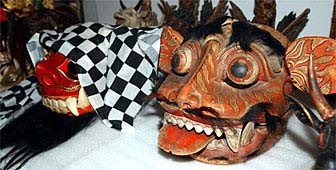Bali culture in Basel

Basel's Museum of Culture is staging an exhibition of the most important permanent collection of Balinese cultural artefacts outside Bali.
For most of the million or so tourists who go there every year, Bali is known as “the last paradise” because of its beaches and tropical scenery. But to the inhabitants of the comparatively small Indonesian province it’s the “Island of the Gods”, and that’s the title of the Basel exhibition.
The links between Basel and Bali go back to 1919, when Basel ethnologist Paul Wirz began conducting systematic research and documentation of Balinese culture. Among other things he made a study of the death cult of the Hindu-Balinese, and it was through him that the collection took shape.
Artists, musicians and other ethnologists from Basel followed up his work, and since 1972 their findings have been meticulously documented by the curator of the current exhibition, Urs Ramseyer.
Entitled “Bali – Island of the Gods”, the exhibition conveys the magical aura of a culture whose driving force remains religion. “Fundamentally it’s a culture moved by the motor of religion,” says Ramseyer.
A living culture
“Religion is still very important in Balinese thinking and is even part of everyday life, and as long as the ceremonies connected to people and nature are needed in Bali, we will continue to have the opportunity to see a very living culture.”
Ramseyer concedes that to some extent mass tourism has had a detrimental effect on present-day culture, for example with folkloric dance performances being staged for commercial purposes.
However he adds that by being the focus of attention for foreign visitors, the Balinese people have been made more aware of the need to preserve and continue their rituals of the past.
The Basel exhibition, which runs for several months, is divided into three parts. The first concentrates on precious objects, some relating to the cult of death as well as to witch cults and magic practices. Highlights include a temple gate and a cremation tower, both adorned with mythological references.
A second section highlights the richness of the museum’s Balinese silk textile collection, while the third – “Living in Two Worlds” – features photographs reflecting the links between centuries-old tradition and the present day.
by Richard Dawson

In compliance with the JTI standards
More: SWI swissinfo.ch certified by the Journalism Trust Initiative









You can find an overview of ongoing debates with our journalists here . Please join us!
If you want to start a conversation about a topic raised in this article or want to report factual errors, email us at english@swissinfo.ch.